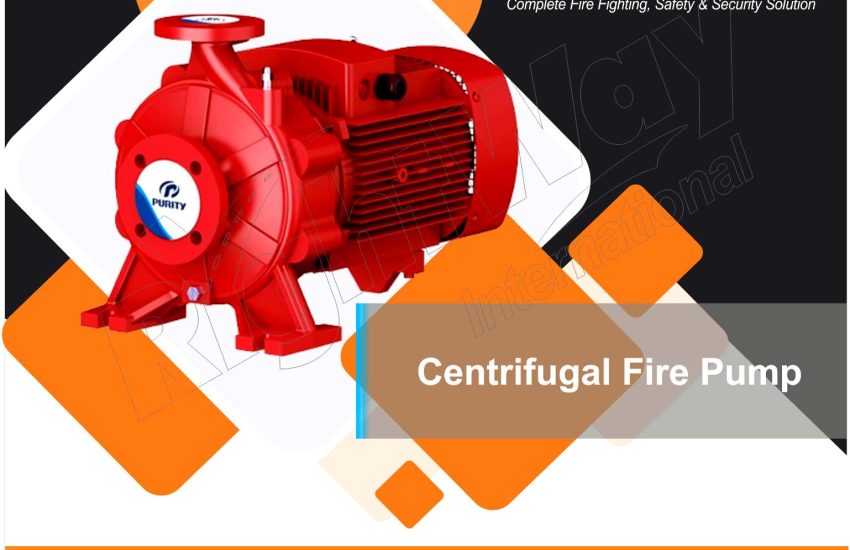Centrifugal Fire Pump are critical components in fire protection systems, providing the necessary water pressure to extinguish fires effectively. These pumps utilize centrifugal force to move water through a system and are widely used in various applications, including industrial facilities, commercial buildings, and residential complexes. This article offers a detailed look at centrifugal fire pumps, including their operation, types, applications, and benefits.
How Centrifugal Fire Pumps Work
Centrifugal fire pumps operate based on the principles of centrifugal force. Here’s a step-by-step explanation of their operation:
- Water Inlet: Water enters the pump through an inlet or suction line.
- Impeller Rotation: The pump contains a rotating impeller that spins at high speeds. The impeller blades push the water outward, creating a centrifugal force.
- Centrifugal Force: This force propels the water towards the outer edges of the pump casing.
- Pressure Increase: As the water moves outward, it gains velocity and pressure.
- Discharge: The high-pressure water exits the pump through the discharge line, providing the necessary pressure for firefighting.
Types of Centrifugal Fire Pumps
- Single-Stage Centrifugal Pumps
- Description: These pumps have a single impeller and are designed for applications requiring lower pressure and flow rates.
- Applications: Commonly used in smaller fire protection systems and residential buildings.
- Multi-Stage Centrifugal Pumps
- Description: Equipped with multiple impellers (stages), these pumps can achieve higher pressures and flow rates.
- Applications: Suitable for large commercial buildings, industrial facilities, and high-rise structures where greater pressure is needed.
- Horizontal Split-Case Pumps
- Description: Feature a split-case design that allows for easy maintenance and inspection of internal components.
- Applications: Used in medium to large fire protection systems where ease of maintenance is a priority.
- Vertical Turbine Pumps
- Description: Have a vertical shaft and are often used in applications where space is limited.
- Applications: Ideal for deep wells or underground water sources, commonly used in large-scale fire protection systems.
- End-Suction Pumps
- Description: These pumps have a compact design with a single suction port and a discharge port located on the end of the pump casing.
- Applications: Suitable for applications with limited space and lower flow requirements.
Applications of Centrifugal Fire Pumps
- Fire Protection Systems
- Use: Essential in fire protection systems to provide the necessary water pressure for sprinklers, hoses, and other firefighting equipment.
- Industrial Facilities
- Use: Protects large industrial operations with high-value assets and complex fire risks, ensuring effective fire suppression.
- Commercial Buildings
- Use: Ensures adequate water pressure for fire safety systems in shopping malls, office buildings, and hotels.
- High-Rise Buildings
- Use: Provides the necessary pressure for fire suppression systems in tall buildings where gravity alone cannot supply sufficient pressure.
- Residential Complexes
- Use: Enhances fire safety in large apartment complexes and housing developments.
Benefits of Centrifugal Fire Pumps
- Efficient Operation
- Benefit: Provides reliable and consistent water pressure, ensuring effective fire suppression.
- Durability
- Benefit: Designed to withstand harsh conditions and frequent use, making them suitable for critical fire protection applications.
- Low Maintenance
- Benefit: Many centrifugal fire pumps are designed for easy maintenance and repair, reducing downtime and ensuring long-term reliability.
- Versatility
- Benefit: Available in various sizes and configurations to meet the needs of different applications, from residential to industrial.
- Cost-Effectiveness
- Benefit: Often more affordable and simpler in design compared to other types of pumps, providing a cost-effective solution for fire protection.
Installation and Maintenance
- Installation
- Considerations: Proper installation is crucial for the effective operation of centrifugal fire pumps. Ensure alignment, adequate space for maintenance, and proper connections to the water supply and discharge lines.
- Maintenance
- Considerations: Regular inspections and maintenance are essential to ensure optimal performance. This includes checking for leaks, monitoring pressure levels, and cleaning or replacing components as needed.
Conclusion
Centrifugal Fire Pump play a vital role in fire protection systems, delivering the necessary water pressure to combat fires effectively. Understanding the different types, applications, and benefits of centrifugal fire pumps helps ensure that the right pump is selected for each specific need. Their efficient operation, durability, and cost-effectiveness make them a popular choice in a wide range of fire protection scenarios. Proper installation and maintenance are key to maximizing their performance and ensuring safety in critical situations.


